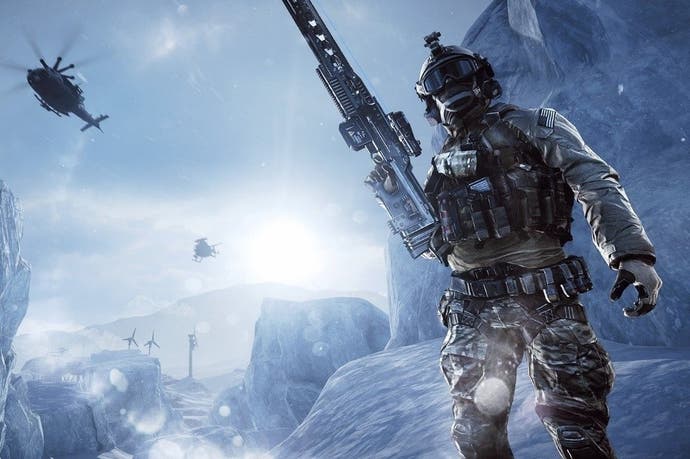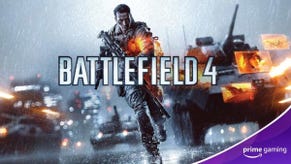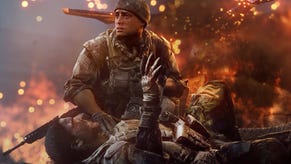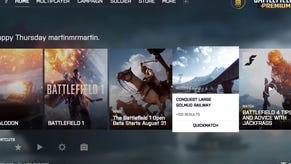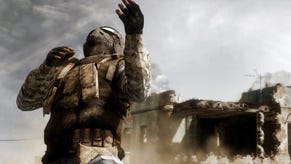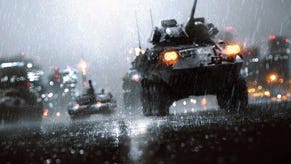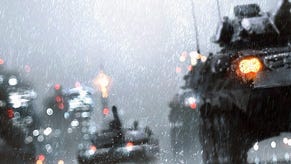Battlefield 4: Final Stand review
End of the road.
Given the time of year it perhaps shouldn't be a huge surprise, but I had completely forgotten that Battlefield 4 was due its fifth and final piece of DLC. After the 'big patch' finally shored up a game that has became the poster child for 'release now, fix later' (since replaced by Driveclub, Assassin's Creed Unity and Halo: The Master Chief Collection), it was all too easy to cast Battlefield 4 into the annals of history.
Diving back into the fray, it's really hard to shake the feeling that Battlefield 4 really does belong in the past. It may only be a year or so old, but the first person shooter has made serious strides in 2014, and blasting through Final Stand's four snow-covered expanses really demonstrate just how much has actually changed in the explosive world of shooters. Titanfall, Destiny and Advanced Warfare aren't the first FPS efforts to feature a more fluid and varied sense of movement, but they're the highest profile and most immediately influential. Battlefield 4, by comparison, feels stilted and slow. You don't miss a double jump until it's gone.
Of course, DICE (or more specifically DICE LA, who once again took the development lead on this DLC pack) shouldn't bow to recent trends and completely upheave Battlefield's movement, but given Final Stand's futuristic setting, it's a shame that almost nothing has changed.
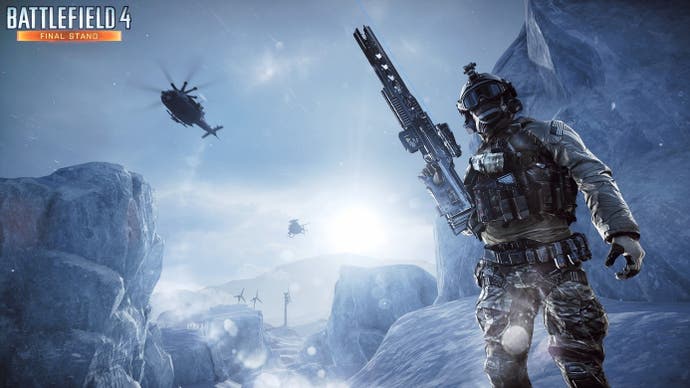
Hi-tech weaponry and vehicles have been promised, but in reality, they're almost indistinguishable from anything you might have in your loadout anyway. The Rorsch-1 is a railgun that makes rare appearances (although it can down a jet or chopper if fired correctly), while the new hover tank -well, it's a lot like a tank. A tank that can drift, but a tank nonetheless.
So instead of a true futuristic overhaul, we have four landmasses designed specifically for scalable warfare, all with a seasonal wintry theme. As always, they're different beasts depending on the mode you're playing, so detailing specific choke points or sight lines isn't applicable. Instead, these maps have their own personality and each encourages a certain playstyle.
First up is Hangar 21, a mountainous map that plays host to a tidy game of Rush. It's actually reminiscent of the Bad Company 2 classic White Pass, with snipers dominating from a high peak, while defenders desperately hold firm in small buildings in the valleys. It's a gorgeous looking space, set at night and illuminated by a rich blue moonlight. The titular Hangar is a kind of Bond-style secret base carved into the mountainside, where the Russians are building a Titan, presumably in time for Battlefield 2142.
This is probably the most interesting map in the pack, with some amusing environmental storytelling and varied terrain, but it's hard to shake the feeling that you've seen it all before. And that's a consistent theme throughout the map pack.
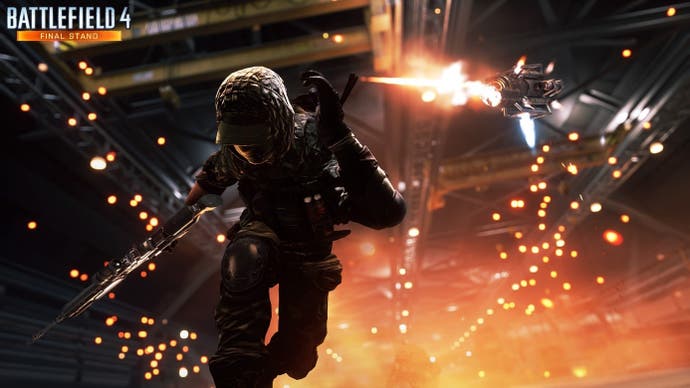
After Dragon's Teeth's interesting close-quarters arenas, Final Stand's open areas feel like they're borne of a studio that has run out of genuinely fresh ideas. Hardly surprising - this is the fifth map pack, after all.
That's even more apparent in Hammerhead, a map designed primarily for full Conquest sessions that spreads out its capture points across a truly enormous space. What it has in size though, it lacks in personality. This is a very big, very white and very boring expanse. It's a bare template for carnage, and relies on the engine to create drama, rather than carefully cultivating it.
More compelling is the excellently-named Giants Of Karelia, which features yet another secret base, a distinct lack of snow, and a railway bridge that always plays host to the most intense firefights. Again, it's a big old map, but that bridge makes for a killer frontline in games of Rush. The map is large enough to sustain all sorts of vehicular mayhem, but not so overwhelmingly enormous that individual infantrymen just get swallowed up by sniper fire. Scattered buildings provide cover (providing they're not being smashed to pieces), while the map's natural valley means squads can do damage by dominating the higher ground. Skilled chopper pilots will also find great joy circling that bridge, picking off those plucky enough to cross it.
Rounding off the package is the much-less excellently named Operation Whiteout. It's not a hugely interesting one, either, until its rather obvious feature kicks in, anyway. This large white battleground becomes even whiter when a blizzard obscures the entire map.
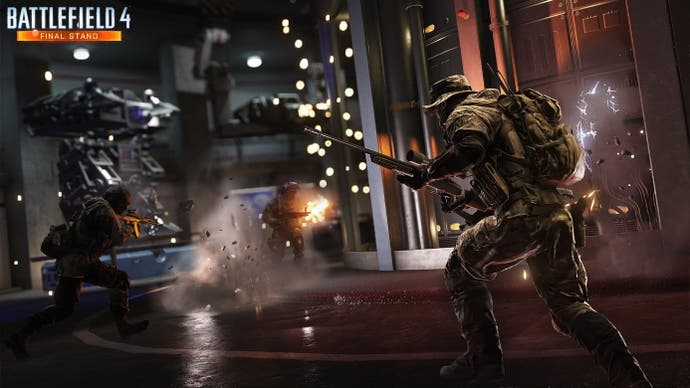
Despite being another mammoth arena, Operation Whiteout actually works well in small team games. It's great for Domination, as the high icy hills let players patrol the capture points below, but a small cave provides enough cover to allow fast squads to succeed.
Played on the larger game types, Operation Whiteout suffers a similar fate to Hammerhead. There are great games to be had here, but its geometry isn't anything we've not seen in any number of Battlefield maps over the years.
Joining the usual battlepacks and assignments, hover tank and railgun are snowmobiles, which promise Modern Warfare 2-style chases but are essentially motorbikes on skis. As with most of the content in Final Stand, they feel like a reskin rather than a genuine innovation.
It is, of course, a touch unfair to expect this map pack to change anything about Battlefield 4. The issues arise purely out of context, after a year in which the genre has undergone a quiet revolution in movement.
Final Stand is an ample and well-made selection of maps and vehicles, but it doesn't ignite the first person shooter flames in the way Battlefield once did. At its best, this is still the shooter that can do things no other can - the emergent drama, the unscripted madness - but Battlefield Hardline will need to offer much more (and work perfectly on day one) for DICE's biggest hitter to not get left behind. The Final Stand? We shall see.
